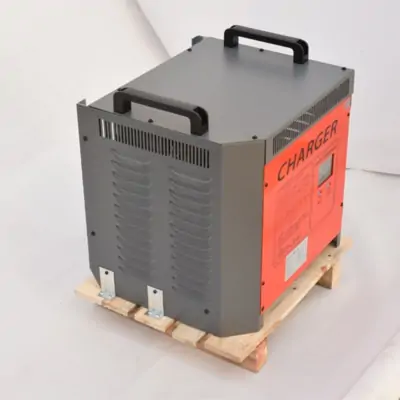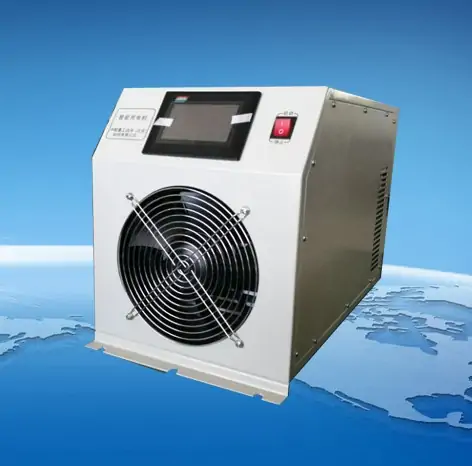Migrating a forklift fleet to lithium-ion technology offers some significant benefits. These benefits include increased uptime and efficiency, reduced maintenance costs, extended service life and more. Now that you've invested money in an electric forklift, you want to make sure you're getting all of these benefits. That's why you want to know what type of forklift battery charger your device needs.
Here are a few factors you should consider before deciding which type of forklift charging system to use:
Battery Type
battery voltage
charging time
Charging Specifications
Equipment Utilization
power infrastructure
Physical Space for Charging Devices
We spoke to battery charger experts to gain insight into what customers should consider before deciding on the type of forklift charging system.
While customers should evaluate several factors, one of the first considerations is charging time,” explains the expert. “This is important because it will determine how much power your charger will need to supply the battery. "
Knowing your battery pack, its capacity, and charge rate can help you determine how long it will take to fully charge the battery. Once you know how long it takes your battery to charge, you can develop a charge-time strategy for maximum productivity.

Not only is it important to understand charging times, but it is also important to understand the different charging systems and their capabilities. Different batteries have unique charging requirements. Lead-acid batteries cannot be charged with the same charger as Li-ion batteries, and vice versa. This is because every battery charger takes charge rate and battery capacity into account and is designed to maximize the life of the battery.
conventional battery charging
The traditional battery charging system is to remove the battery at the end of the shift and put it on the charger and let it fully charge. This process usually takes 8 to 10 hours. This is a must for lead-acid batteries, which also require cooling time (an extra 8 hours).
Lead-acid batteries also require dedicated charging chambers to contain any potential spills, leaks, or emissions of toxic fumes. The cooling-off period means that if you operate 24/7, you will need to purchase three lead-acid batteries for each forklift.
"Unlike other types of chargers, conventional charging systems are ideal for single-shift applications, where the daily duty cycle requires less energy than the battery's capacity," said an electrical engineering company technician. "This allows the battery to be charged overnight in the car."
Lithium-ion batteries can be charged conventionally if that suits your operation, but lithium-ion batteries can take advantage of more efficient charging systems.
fast charging
Fast charging takes 10 to 30 minutes. Generally not recommended for lead-acid batteries. "Lithium batteries can
Accepts charging faster and more efficiently than lead-acid batteries, enabling a single battery per vehicle system to operate in high-use, multi-shift applications, where lead-acid battery cycle life is greatly improved if it is to be charged quickly shorten and damage the battery.
Lead-acid batteries require weekly equalization charges. This is where the battery charges to 100%. Fast charging stations are ideal for 24/7, always-on-the-move operations where time can't be spent changing batteries or leaving devices to sit idle.

When fast charging, the battery is hovering between 40% - 80% SOC, and charging requires 3 - 4 times more current than conventional charging. This may require conversion to accommodate permanent connectors and dual battery cables. Or you can choose to install fans or vents to keep the battery cool.
The advent of lithium-ion battery technology and its low internal resistance allows for charging at any time when the device is not in use. A single charge takes 10 to 30 minutes. Generally not recommended for lead-acid batteries. It is recommended to recharge the lithium-ion battery pack, which actually helps to maximize the cycle life of the battery pack.
Like fast charging stations, opportunity charging stations are ideal for multi-shift operations. With opportunity charging, you can keep the battery charged enough to keep your shift running with occasional recharges. "This is not possible with older technologies such as conventional lead-acid batteries, which have high internal resistance and the dreaded 'memory effect'.
Unlike fast charging, opportunistic chargers can be more easily integrated with existing electrical infrastructure, making this type of charger ideal for operations that want to maximize forklift battery usage.
Find the right battery charger for your operation
Not all battery chargers are the same, and there is an ideal charger for every operation.
conventional battery charger
fast charger
chance charger
It is important to consider all charging factors that affect forklift utilization. Ask yourself what your expected charging time is. Ultimately it comes down to which charger is right for your unique operating needs. Do you need continuous operation, or do you have planned downtime?
Understanding forklift battery charging systems will help you maximize battery life, performance and operating costs.
Contact Person: Miss. Kiki
| WhatsApp : | +8617763224709 |
|---|---|
| Skype : | +8617763224709 |
| WeChat : | +8617763224709 |
| Email : | kiki@lifepo4-battery.com |